I constantly get asked: “What is more important—quality paper, paint or brushes?” And you know what my answer is? Paper. Then the next question is: “Which is the best watercolor paper??”
Paper is one of the biggest factors in the appearance of colors, how water and pigments pool, blend and dry and so much more. While working with great paint and brushes is highly recommended as well without a good surface to work on, painting can be dull, unenjoyable and frustrating.
Related: The Ultimate Guide to Watercolor Brushes and The Ultimate Guide to Watercolor Paints
If you’re wondering what to look for when buying watercolor paper, then let’s dive in! Don’t feel like reading everything? Check out my Amazon storefront here where I’ve saved a lot of art supplies, business equipment, and other fun mom things!
Disclosure: This post is sponsored by Dixon Ticonderoga Co. and the St. Cuthbert's Mill brand, but all opinions are my own. This post also contains affiliate links which means for some product purchases, I may earn a small commission—at no extra cost to you. I only share my faves and it helps support the free content I share! Thank you!
The Ultimate Guide to Watercolor Paper
There are a few different criteria to look for when shopping for watercolor paper, from quality to texture, tinting and format. Below you’ll find links to favorite brands and descriptions of what to pay attention to when you’re shopping!
Quality
Just like brushes and paint, there are two types of quality when it comes to watercolor paper: artist level and student level. Artist quality paper is also known as archival paper. It’s acid free, built to last and can be way more enjoyable when painting. If you’re just practicing and a beginner, you can absolutely get away with using student quality paper. Just keep in mind that it will become brittle over time and it won’t perform as well as the artist level paper.
Surface or Texture
This aspect of watercolor paper is more subjective. There are three different types of textures that come with watercolor paper: hot-pressed, cold-pressed (my preference) and rough. Like I said, this one depends on your personal style of painting and preferred feel and I recommend checking out all three. For me, cold-pressed is the perfect in-between texture. It’s not too smooth like hot-pressed and not too rough like rough paper. It’s got a nice toothy texture that will help keep the pigment and water in place, but not too rough to the point where all of my strokes are looking dry and spotty. However, because I like to work with a decent amount of water and paint wet-in-wet quite often, my work looks completely different on hot-pressed and rough and yours may not!
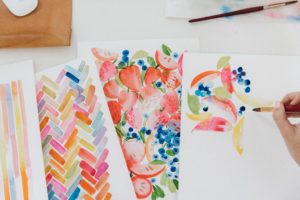
Tinting
For the most part, all watercolor paper is either bright white, white or cream. I prefer bright white as it helps illuminate the transparent quality of watercolor pigments, but it’s also a nice contrast against the brighter, more vibrant colors I paint with. If you want a more subtle or natural look, you may want to go with an off white or cream! There’s also black watercolor paper, which would be interesting to try! You can see me paint with black watercolor paper in this video!
Format
When you go to an art supply store, you may notice there are a bunch of different types of formats for watercolor paper. There are blocks, pads, loose sheets and rolls. My preference is always blocks unless I’m wanting to paint something really large, then I’ll do loose sheets. The reason I don’t like working on pads of watercolor paper is because of the warping and buckling. Blocks of paper are glued down on the sides and help prevent this from happening. If you don’t purchase a pad, you’ll want to work on one sheet and tape it down on your table or some sort of working surface.
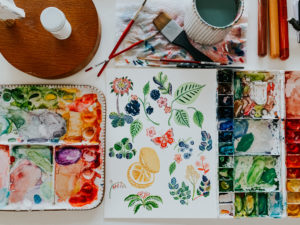
My Top Picks
My go-to paper right now.
Obviously this is the GOAT. Sometimes the texture of the cold-pressed paper is a liiiiittle on the rough side. But it’s AWESOME.
A more budget-friendly paper made by the same brand as Saunders mentioned above.
This was the paper I used when I was first learning watercolor. It’s a dream!
Don’t forget to check out all of the supplies in my shop HERE!
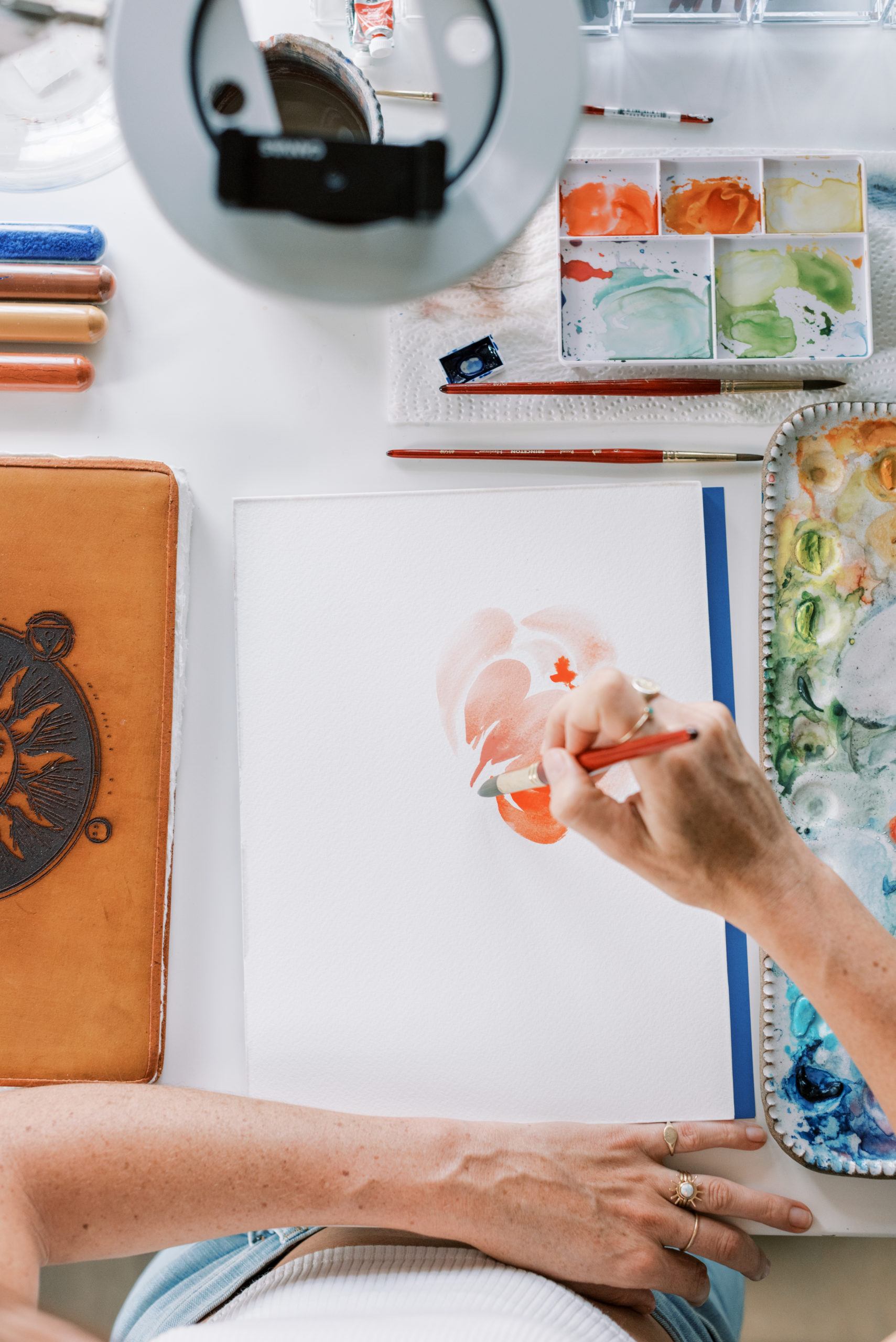
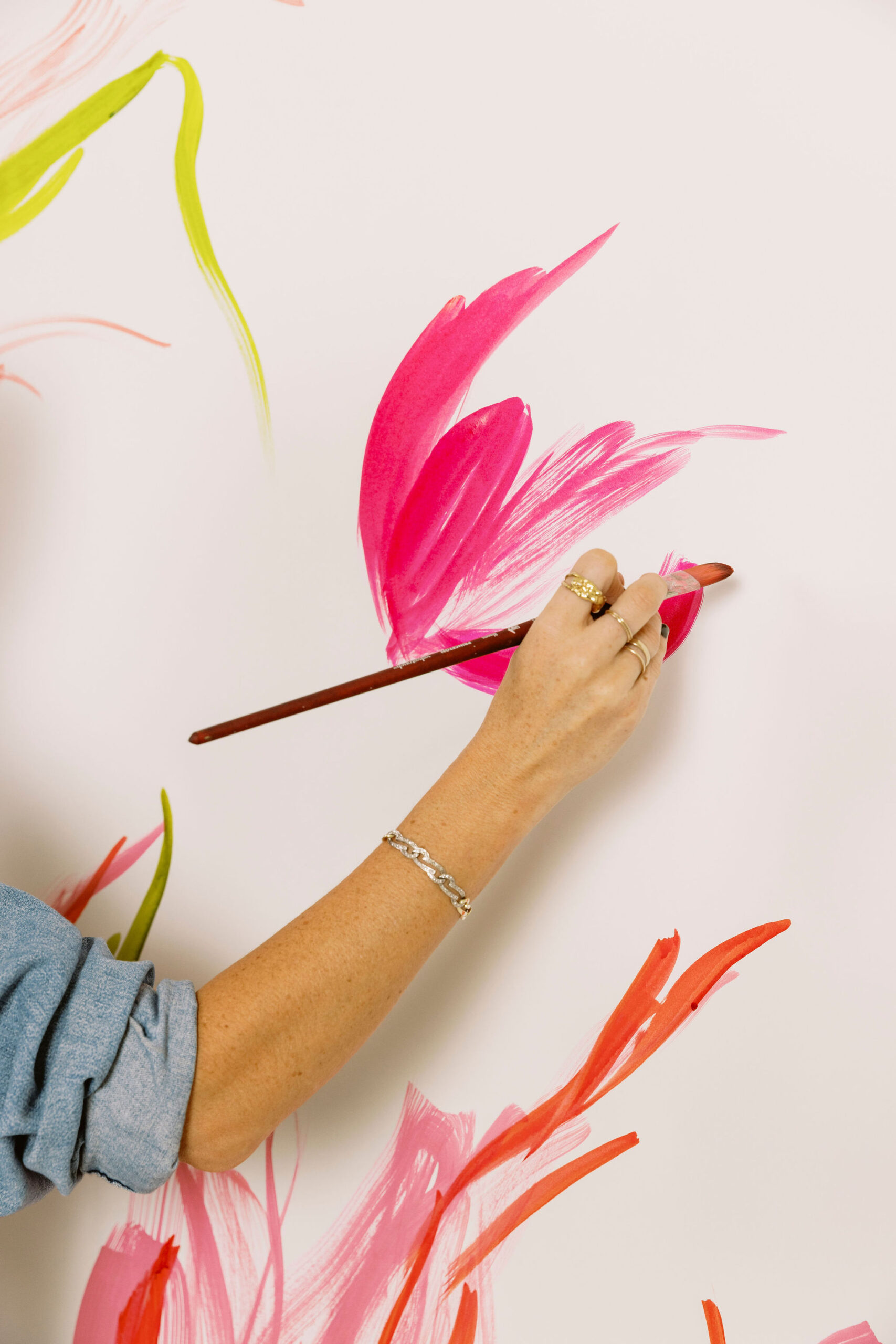
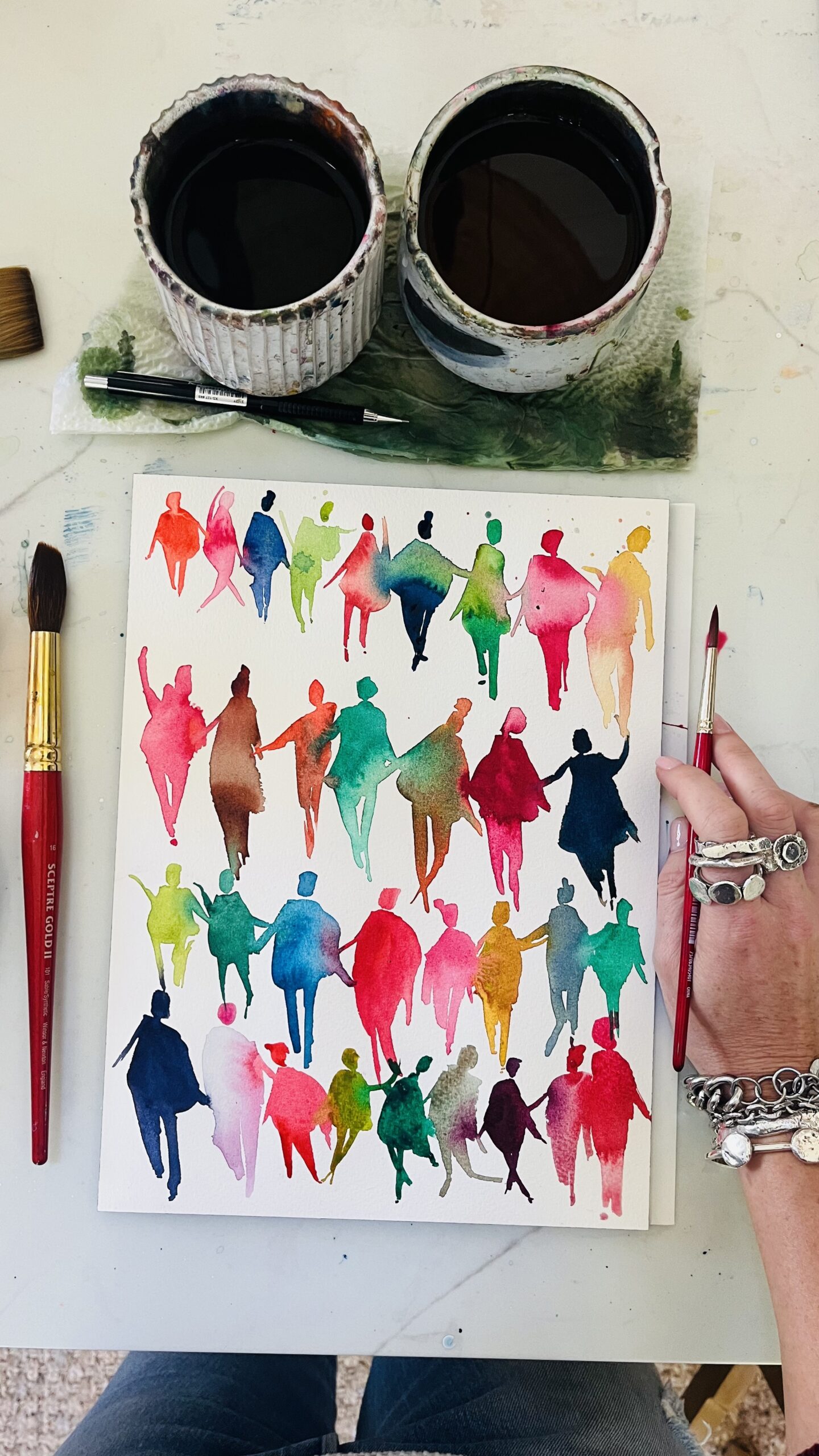
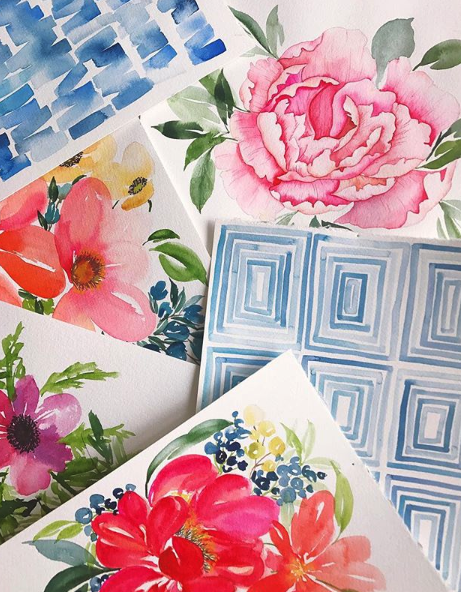
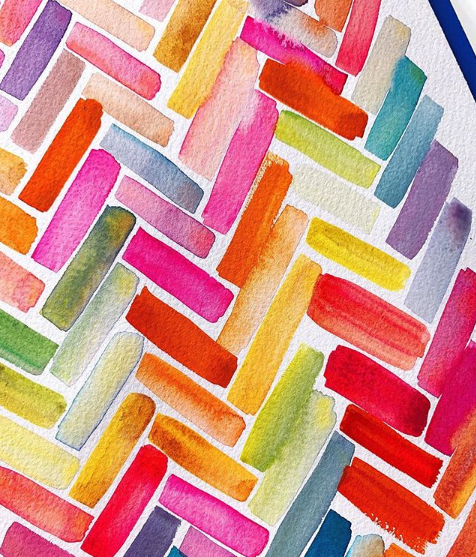
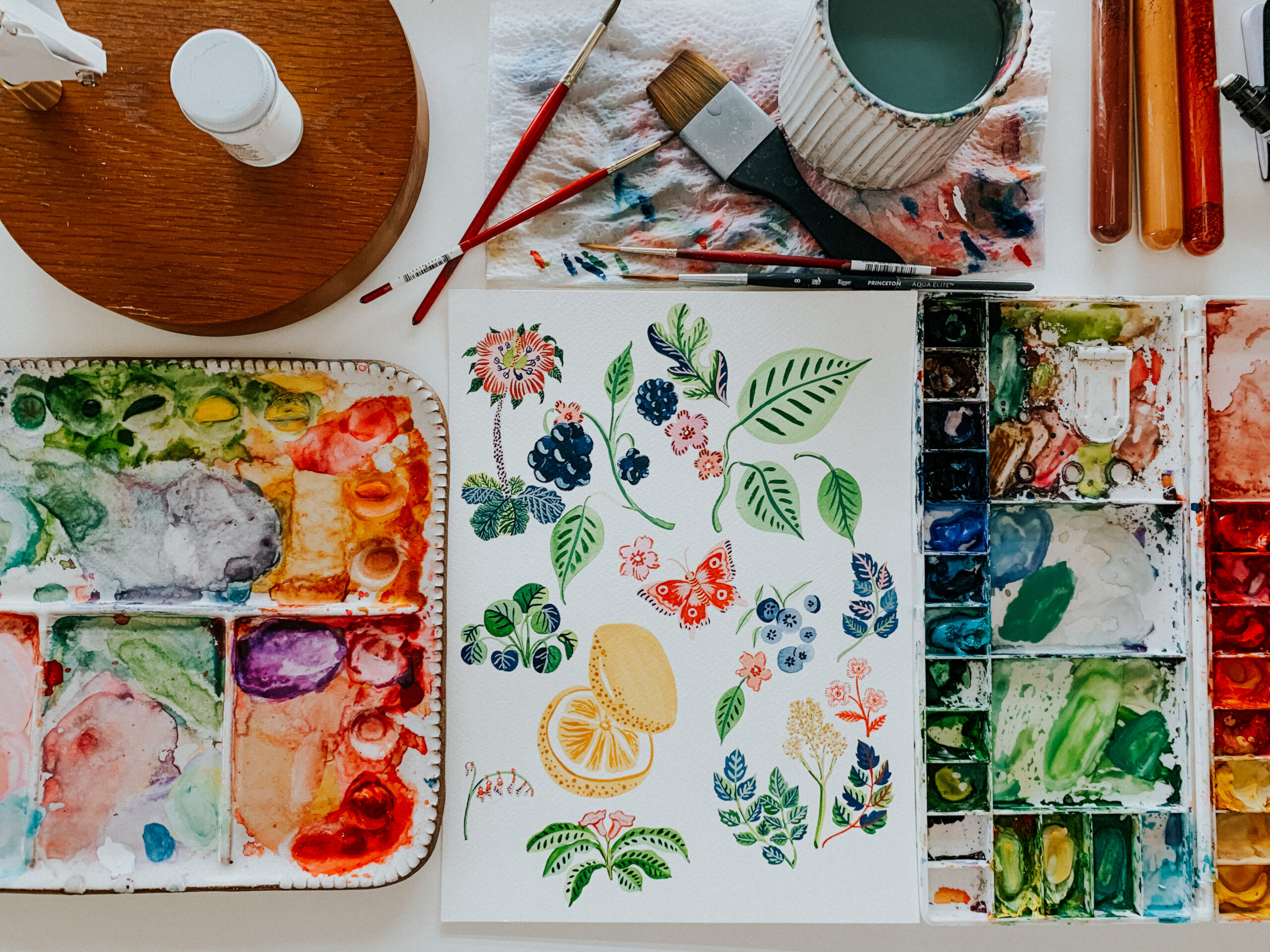
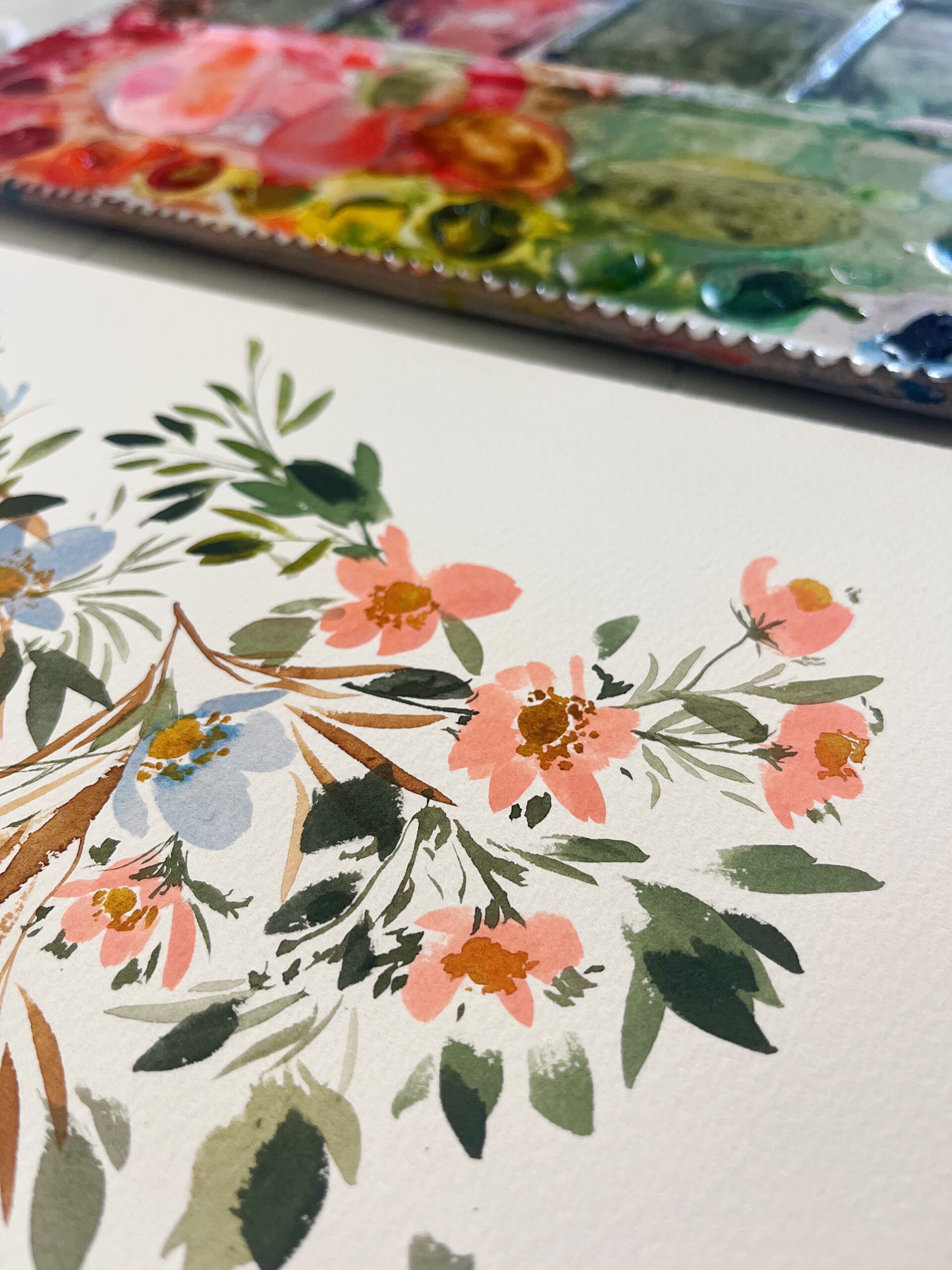


Thanks for sharing these tips Jenna, they’re invaluable to a beginner overwhelmed by the options lol
Hello Jenna,
Enjoyed your info on changing to less toxic watercolor supplies.
Did you uncover any info on toxicity of 100% papers? Some reports that I have seen suggest that most 100% cotton papers contain fungicides, pesticides and bleaches. Is the Saunders Waterford less toxic than others?
Thanks, Anne
Hi Anne! We don’t have specific info about it, but that’s a good question!